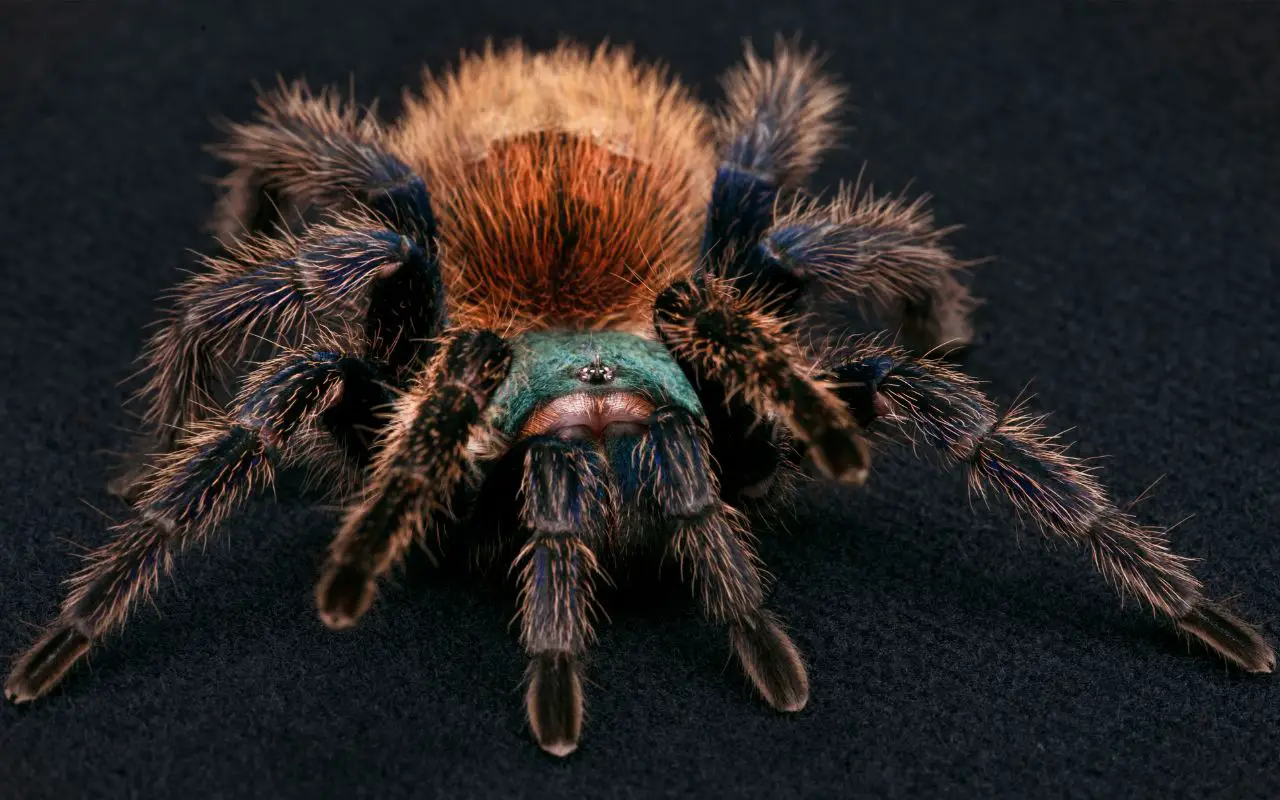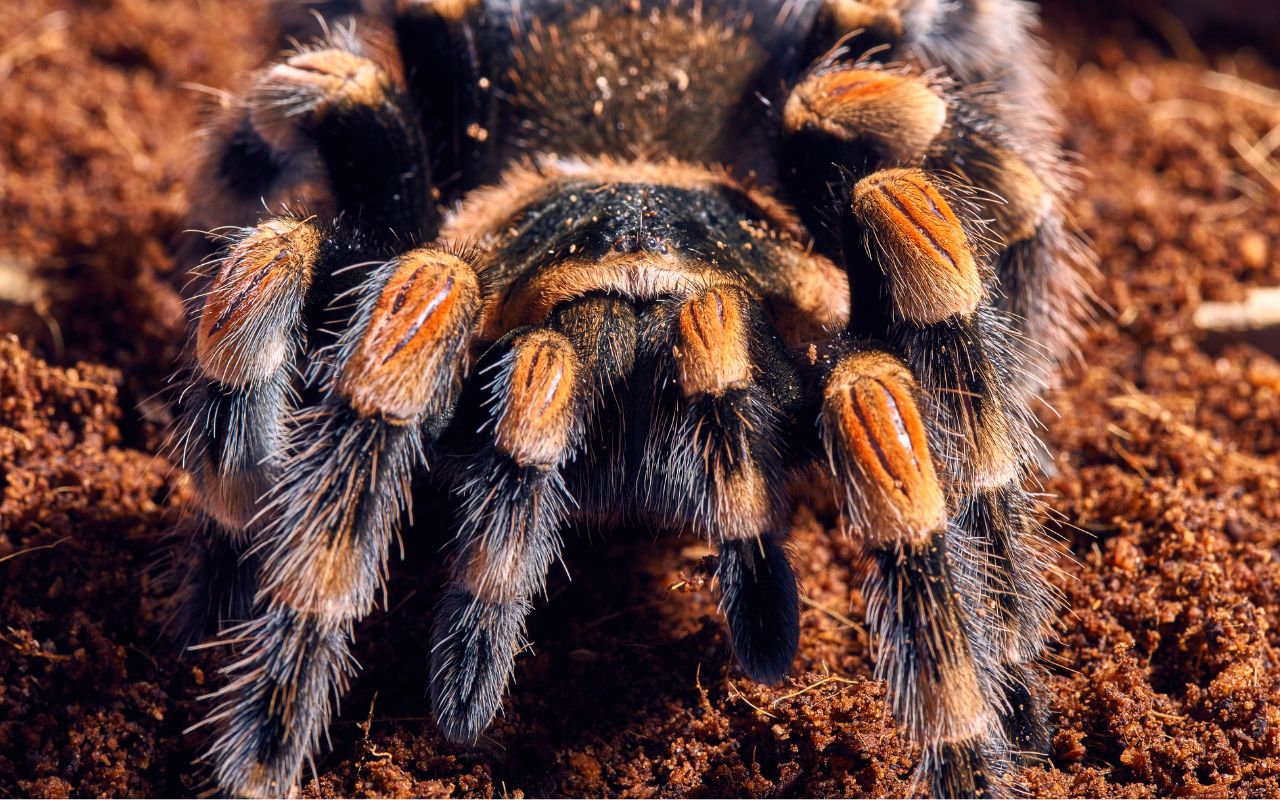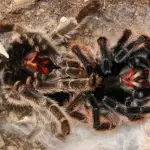Last updated on February 1st, 2023 at 10:03 am
Curly Hair Tarantula care is pretty easy, so long as you get a few things like humidity, temperature and diet right. Read on to learn more…
If you are interested in keeping a Curly Hair Tarantula (Tliltocatl albopilosus), this article will provide you with some basic information on how to care for your new pet. It will also cover tank setup, temperature and humidity levels. Here are some tips to follow to ensure your Curly Hair Tarantula’s health and happiness. Read on to learn more! Then, be sure to ask any questions you might have!
Curly Hair Tarantula size
Curly Hair Tarantulas can grow up to six inches in length, including their legs. Curly Hair Tarantulas are native to Costa Rica. Males are slightly slimmer than females, and have hooks at the end of their front legs which they use for mating.
They have a shorter lifespan than females and are capable of maturing before three years old. Males are also lighter in color and have shorter hair than females.
Females usually reach sexual maturity within eight to twelve moults, but males can achieve sexual maturity much earlier. Feeding your Curly Hair Tarantulas frequently can help speed up their growth.
The general rule is to feed your tarantula at least twice per week, while feeding it once or twice a week should do the trick. Be sure to remove any uneaten prey within 24 hours so it can’t nibble at the spider or annoy it.
Tank setup
A proper tank setup for a Curly Hair tarantula involves providing enough substrate for burrowing. The substrate can be as simple as Coconut fiber, or as elaborate as Josh’s Frogs Dig It and BioBedding Tropical. Whatever substrate you choose, make sure you put some cork bark or similar hiding places on top of it, just to make your spider feel safer.
As with most pets, a water dish should be provided at all times. A heating pad is also a good idea if you live somewhere very cold, but not necessary if not.
Though many keepers enjoy using UVB lights like this to illuminate their enclosures, it’s important to remember that lighting isn’t necessary for Tarantulas, and most of them are nocturnal, anyway. It’s just a nice feature for us, especially if you have a display enclosure.
Water is essential to the health of your curly hair tarantula. Without water, they may become dehydrated and not eat. Also, molting is a yearly process after the first year.
At this time, your pet may get sluggish and stop eating – it’s vital to give them enough humidity at this time so the molt goes well. The best way to do this is with a hygrometer (humditiy gauge) placed in the enclosure.
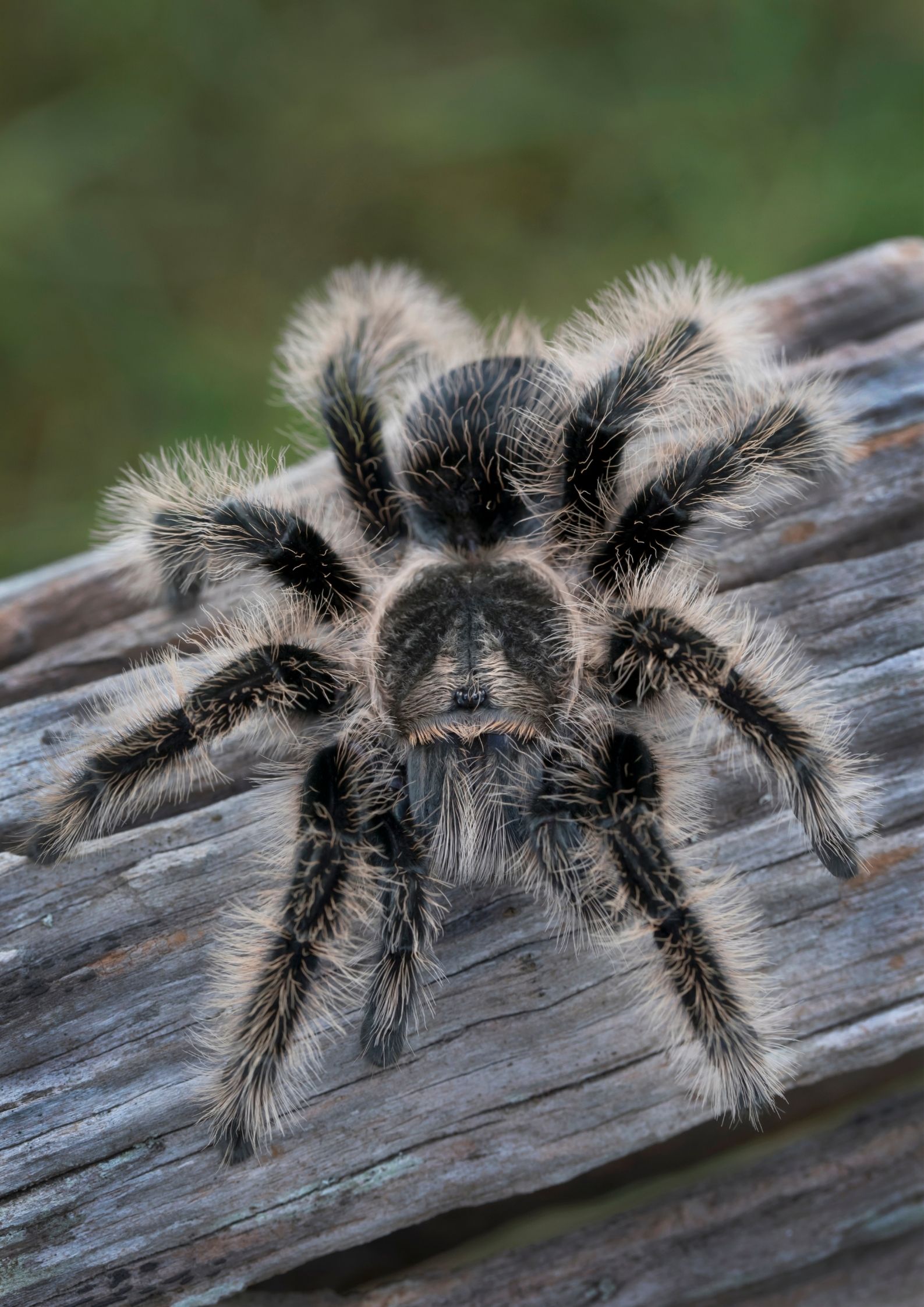
Curly Hair Tarantula temperature
The most common question people have about their pet tarantula is what temperature to give it. If possible, the temperature should be between 75 and 85 degrees Fahrenheit but can drop to as low as 65 Fahrenheit.
Though midday temperatures in some habitats they inhabit get quite high, it’s important not to overheat a tarantula. This is because tarantulas live in burrows underground.
The ground keeps them cooler than the air during the heat of the day, which is one of the reasons they make burrows. Also, the ground retains heat from the sun at night better than air does.
The Curly Hair Tarantula is not a large species and needs a 5 to 10-gallon tank, tub or perspex enclosure. These tarantulas are not big climbers, so they don’t need much floor space.
Their tank size is important, as their legspan is two to three times longer than their body length. The height of the enclosure is around a foot high.
Small enclosures like this usually retain heat well, and have a little bit of an incubator effect going on. If the room you keep the spider is a comfortable room temperature for us humans, then it will be fine for your Curly Hair.
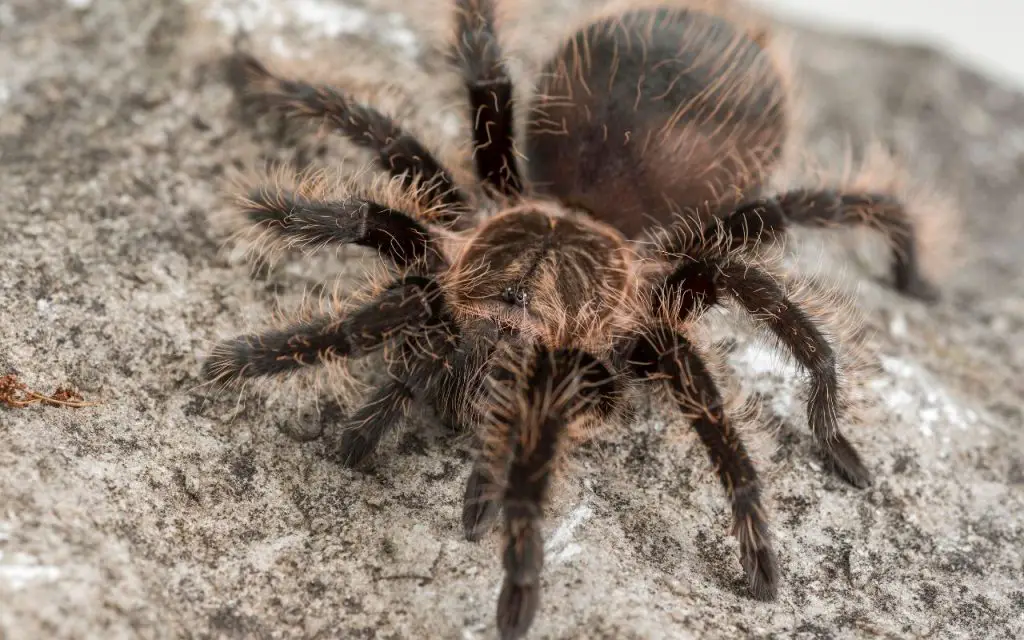
Curly Hair Tarantula humidity
It is best to keep it in an enclosure with at around 65%. This is pretty similar easy to maintain if you place a hygrometer in the enclosure and mist it when needed.
The humidity level is important for your pet’s well-being, especially during hot months. Curly Hair Tarantulas need more space than their height, so you will need an enclosure that is at least three or four inches high but which maintains a good ambient humidity nonetheless.
Curly Hairs molt often, and humidity needs to good every single time. It’s probably the most important factor in their care.
Their substrate should be a mixture of peat moss or an acrylic-free potting soil, layered with coconut husk bedding. This type of substrate will allow your pet to burrow through the substrate, ensuring proper humidity and temperature.
You should avoid adding water to your tarantula’s tank more than twice a day, but always leave in small water bowl. To prevent drowning, make sure the dish is shallow and put some pebbles or gravel just below the surface of the water.
Do not add cotton wool or sponge to the water; these materials can attract microbes. Water dishes should also be kept clean. A curly hair tarantula may be inclined to move water dishes, so be to sure to keep an eye on this.
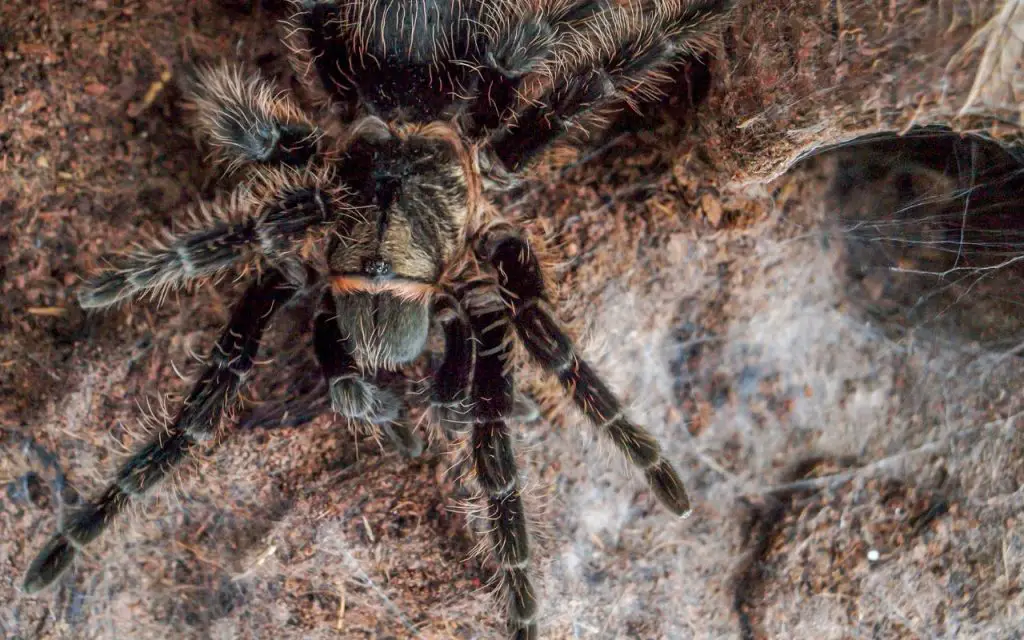
Diet and feeding schedule
This tarantula has a relatively low maintenance diet.
When choosing prey items for your tarantula’s diet, remember that they are fragile and don’t like to tackle huge creatures. Therefore, feeding your tarantula appropriately-sized bugs is crucial to their health.
Most tarantula keepers feed their slings as often as possible. Depending on the type of prey item, the feeding schedule may vary from once a week to three times a day. Adults, on the other hand, should be fed once or twice a week.
For spiderlings, appropriate prey items include:
- pinhead crickets
- flightless fruit flies
- confused flour beetle larvae
For adults, appropriate items include:
- crickets
- locusts
- hornworms
- waxworms
- mealworms
- Dubia roaches
When feeding young tarantulas crickets, most experienced keepers recommend killing the crickets first so that there’s no possibility of them kicking the spider and injuring it.
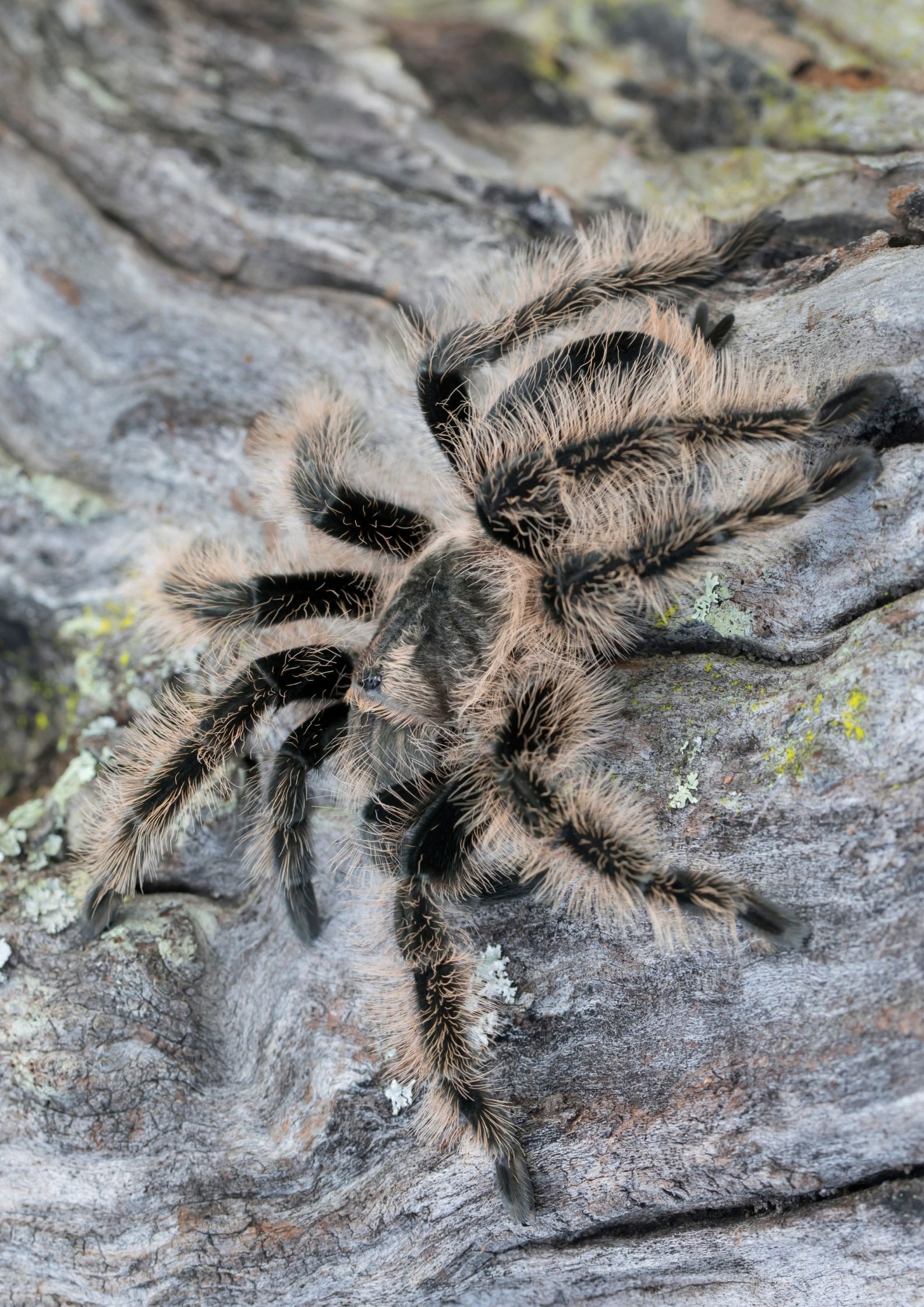
Lifespan
The life span of a curly hair tarantula varies, but the average life expectancy of a female tarantula is around eight to 10 years. Male tarantulas, on the other hand, tend to live only four to five years in captivity.
In the wild, male tarantulas wander off more often, dying of predators. Luckily, the care for both sexes is the same, and even if the males only live five years, that still isn’t bad for a small animal.
Curly Hair Tarantulas are fairly easy to keep and are good pets. They are small and docile, and only require moderate handling. You should only handle them a few times per week, and never for long periods of time.
While a curly hair tarantula requires minimal exercise, it does need a humid environment to stay healthy. It needs a humidity level of around sixty-five percent and regular access to water.
Its molt occurs once a year, and you should handle your tarantula carefully during this time to prevent damaging its new exoskeleton. You can keep a Curly Hair Tarantula for as long as you care for it properly.
Handling
While the Curly Hair Tarantula is a fairly docile spider, it is still important to know how to handle it safely. While most bites from this species are not medically significant, it can fall from a height and cause itself serious injuries. Therefore, you must only handle it on the floor to keep the tarantula safe.
It is vital to avoid dropping a curly hair tarantula from more than a couple of inches. Not only will you likely harm it, but you could also cause it stress by handling it improperly. Also, avoid poking it from behind, as this may lead to it kicking hairs at you. If you feel that the tarantula is calm, handling is fine, but caution is always a must for its safety.
The Curly Hair Tarantula has golden-bronze hairs that appear black and brown. It is easier to handle than other types of tarantulas. However, you should know that it is prone to developing a bald spot on its abdomen due to repeated kicking. So, make sure that you handle your new pet gently and calmly.
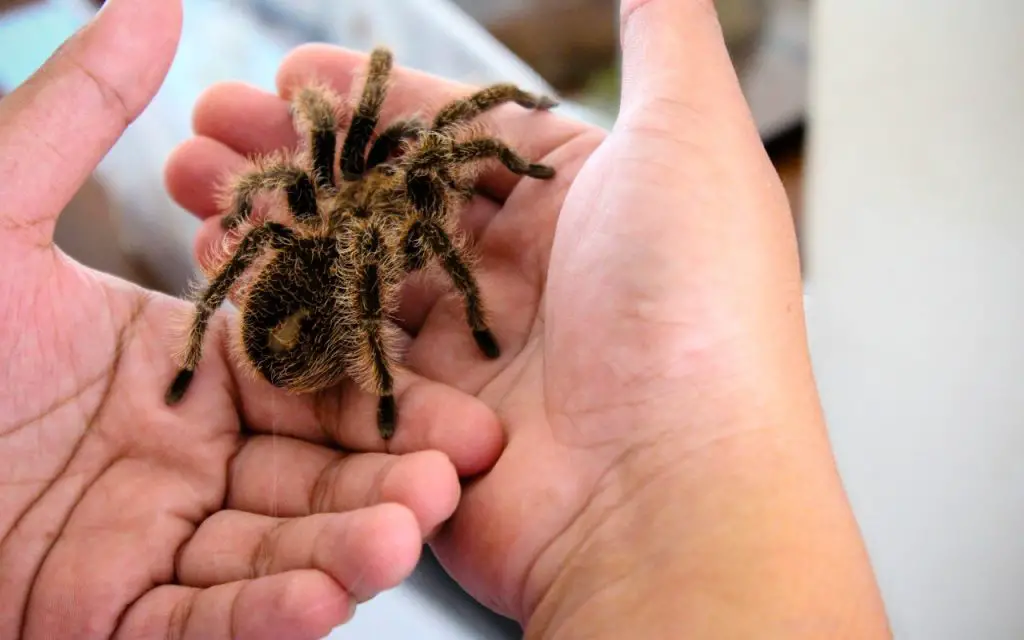
Curly Hair Tarantula price
This species is generally easy to care for and is quite affordable thanks to captive breeding these days. If you’ve always wanted to own a tarantula, the Honduran Curly Hair Tarantula is a great choice.
They are not very active, but they are fun to watch and care for when they do come out. Because they spend most of their time in their burrows, they’re not the most exciting pet, but they are a great place to start if you’ve never owned a spider before.
In general, a curly hair spiderling can be bought for as little as $30, and adults for around $50. Just remember that if you buy online there will be a shipping fee of around $30-40.
Curly Hair Tarantula FAQ
Do curly hair tarantulas like moist substrate?
Using a proper substrate like coco coir or a mix of vermiculite and pesticide-free potting soil is essential to maintaining proper humidity levels. Adding water as needed is essential to prevent the enclosure getting too dry, but allowing a lot of water to soak into the substrate is also a bad idea.
Too much moisture will stress tarantulas. It can also make them sick, and kill them quite quickly. For example, years ago, many people thought that the Chilean Rose needed a lot of humidity, and this misconception killed a lot of pets! Likewise, the Curly Hair will also do poorly if it substrate is wet: aim for a nice 65% humidity level, and monitor it with a hygrometer (humidity gauge).
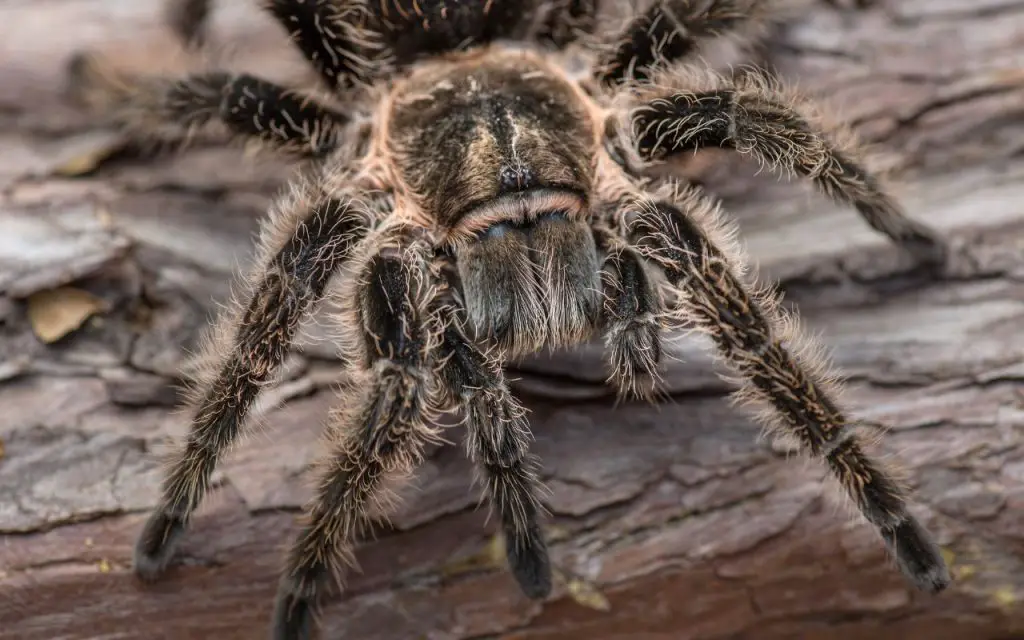
Can curly hair tarantulas climb glass?
Many tarantulas are capable of climbing glass – including the Curly Hair. In fact, they have the size and long legs that make them great climbers. The hairs on the underside of their feet have a mechanism that allows them to adhere to dry materials like glass.
Something you may notice is that males or newly acquired Curly Hairs climb the walls of their enclosures, then settle down over time. This is normal behaviour. Just make sure there is nothing sharp or spiky the spider can land on if it falls off.
Do curly hair tarantulas need heat?
Generally, these animals need an environment between 70 and 85 degrees Fahrenheit to thrive. If you are planning to keep your tarantula indoors, you can use a heated tank to provide the ideal temperature for your pet.
Keep in mind that tarantulas are nocturnal, so direct sunlight will throw off their internal clock and potentially kill them. Also, heat lamps and ceramic heat emitters can dry them out and kill them very quickly.
If the room you keep them in gets below 65F, then you have two options: put a space heater in the room (away from the enclosure), or stick a 5 watt maximum heat pad to the side of the enclosure. Little heat pads like that provide gentle heat, and are reasonably safe for your pet so long as they are on the side and not the bottom.
Curly hair tarantulas are native to the rainforests of Costa Rica and Honduras, so they are used to warm temperatures. However, they spend their days in burrows, where the temperature is lower, and dig down further if they get too warm. As a general rule, room temperature is best for this species.
Summary and quick facts
| Common name: | Curly Hair Tarantula |
| Scientific name: | Tliltocatl albopilosus |
| Distribution: | Costa Rica, Honduras, Nicaragua |
| Care level: | beginner |
| Temperament: | docile |
| Temperature: | 75 to 85 Fahrenheit, but can drop as low as 65 |
| Humidity: | 65% |
| Diet: | crickets, waxworms, mealworms, dubia roaches, hornworms |



